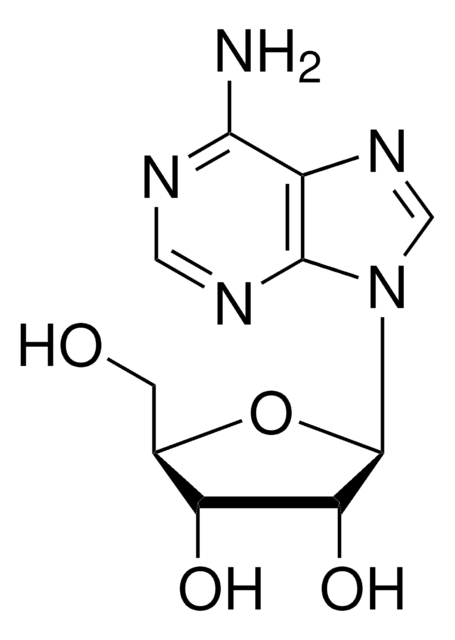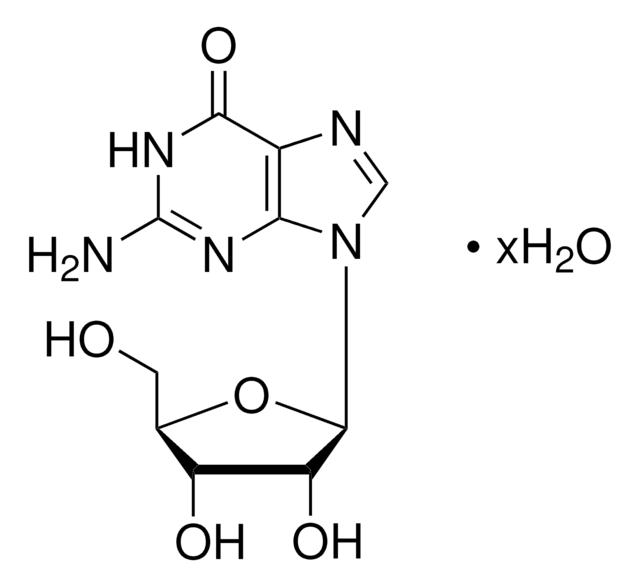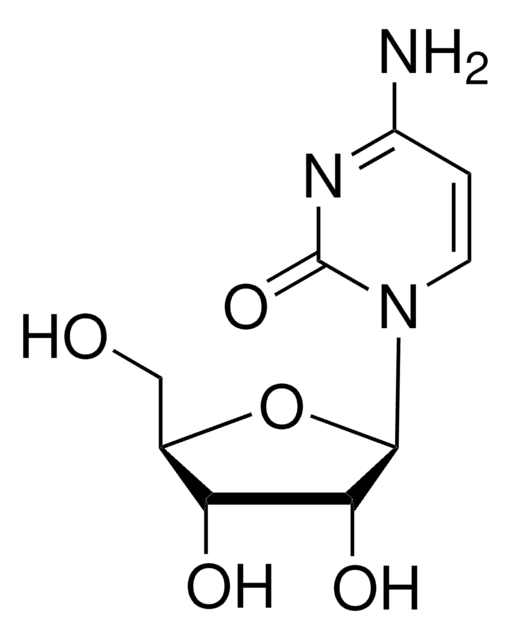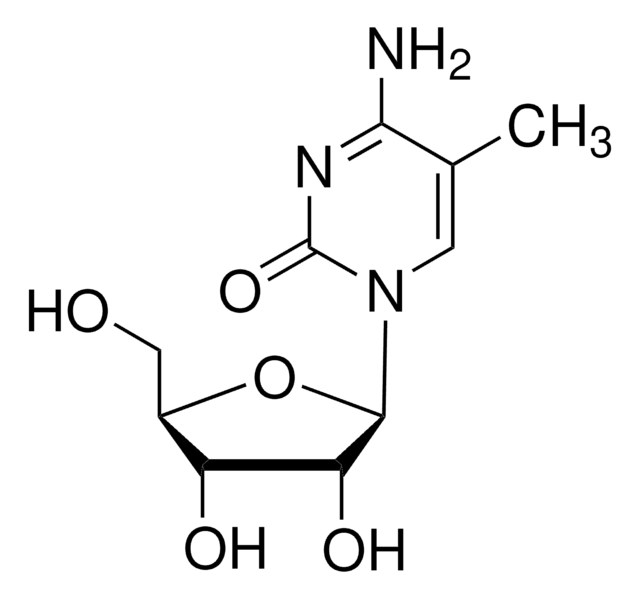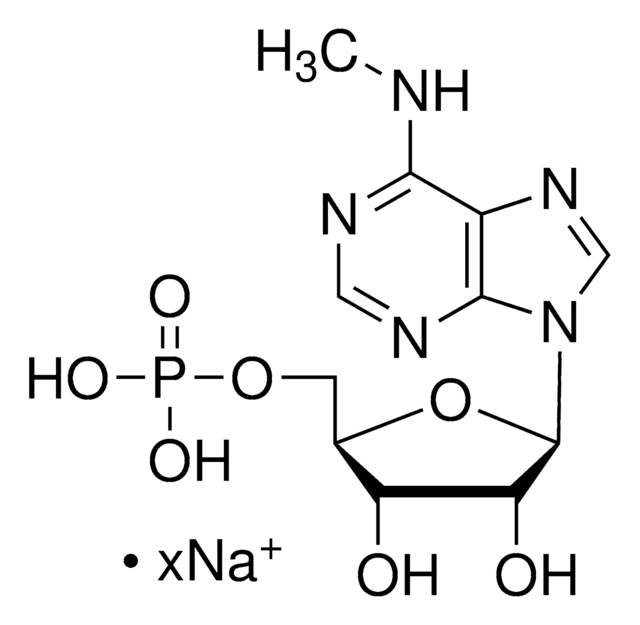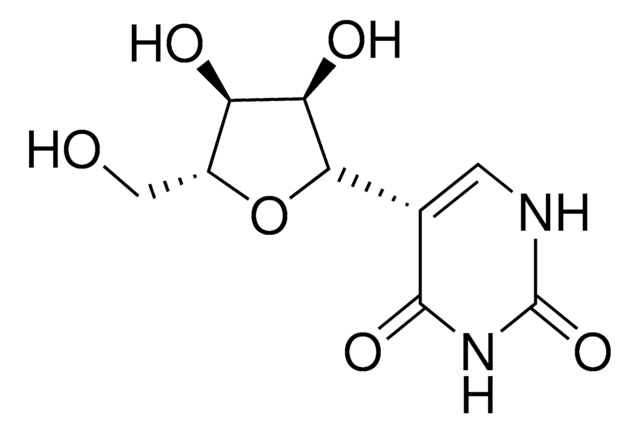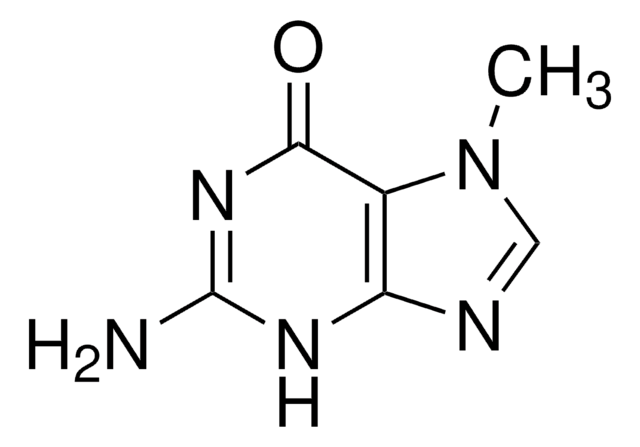SMB00939
1-Methyladenosine
≥95% (HPLC)
Sinonimo/i:
1-Methyladenosine, N1-Methyladenosine
Autenticatiper visualizzare i prezzi riservati alla tua organizzazione & contrattuali
About This Item
Formula empirica (notazione di Hill):
C11H15N5O4
Numero CAS:
Peso molecolare:
281.27
Numero MDL:
Codice UNSPSC:
12352123
NACRES:
NA.79
Prodotti consigliati
Livello qualitativo
Saggio
≥95% (HPLC)
Forma fisica
solid
Colore
white
Temperatura di conservazione
-10 to -25°C
Stringa SMILE
CN1C=Nc2c(ncn2[C@@H]3O[C@@H](CO)[C@H](O)[C@@H]3O)C1=N
InChI
1S/C11H15N5O4/c1-15-3-14-10-6(9(15)12)13-4-16(10)11-8(19)7(18)5(2-17)20-11/h3-5,7-8,11-12,17-19H,2H2,1H3/t5-,7-,8-,11-/m1/s1
GFYLSDSUCHVORB-IOSLPCCCSA-N
Cerchi prodotti simili? Visita Guida al confronto tra prodotti
Descrizione generale
1-Methyladenosine is an RNA modification that arises through distinct processes, including enzymatic catalysis and the alkylation of RNA by specific agents.
1-Methyladenosine, also known as M1A, belongs to the class of organic compounds known as purine nucleosides. Purine nucleosides are compounds comprising a purine base attached to a ribosyl or deoxyribosyl moiety. 1-Methyladenosine is a strong basic compound (based on its pKa). Precise m6A mapping by m6A-CLIP/IP (briefly m6A-CLIP) revealed that a majority of m6A locates in the last exon of mRNAs in multiple tissues/cultured cells of mouse and human, and the m6A enrichment around stop codons is a coincidence that many stop codons locate round the start of last exons where m6A is truly enriched. The methylation of adenosine is directed by a large m6A methyltransferase complex containing METTL3 as the SAM-binding sub-unit. Insulin-like growth factor-2 mRNA-binding proteins 1, 2, and 3 (IGF2BP1–3) are reported as a novel class of m6A readers.
Applicazioni
1-Methyladenosine, a modified nucleoside produced during tRNA processing by methyltransferases, has garnered attention as a potential biomarker for early cancer detection due to its elevated urinary excretion in various cancer forms. Additionally, its presence can be monitored in serum. Moreover, 1-Methyladenosine levels rise during active rheumatoid arthritis, making it a promising indicator for this condition. It finds application in research pertaining to cancer, autoimmune diseases, metabolomics, biomarker discovery and drug discovery studies.
Altre note
For additional information on our range of Biochemicals, please complete this form.
To gain a comprehensive understanding of our extensive range of Monosaccharides for your research, we encourage you to visit our Carbohydrates Category page.
Codice della classe di stoccaggio
11 - Combustible Solids
Classe di pericolosità dell'acqua (WGK)
WGK 3
Punto d’infiammabilità (°F)
Not applicable
Punto d’infiammabilità (°C)
Not applicable
Choose from one of the most recent versions:
Possiedi già questo prodotto?
I documenti relativi ai prodotti acquistati recentemente sono disponibili nell’Archivio dei documenti.
Il team dei nostri ricercatori vanta grande esperienza in tutte le aree della ricerca quali Life Science, scienza dei materiali, sintesi chimica, cromatografia, discipline analitiche, ecc..
Contatta l'Assistenza Tecnica.